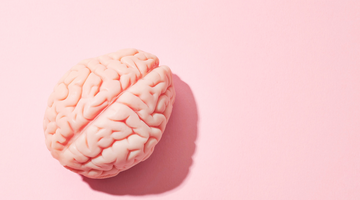Are women at higher risk for stroke?

A stroke happens when blood vessels in the brain (most commonly the arteries in the brain) are blocked off by a clot, or break open and rupture causing blood to bleed throughout your brain. Strokes are life-threatening medical emergencies that need immediate attention for the best care. If prevention doesn’t work, how do you best manage treatment options? Along with prevention tactics and possible recovery plans, we’ll discuss causes of a stroke, how to recognize a stroke, and factors that increase your likelihood of experiencing a stroke.
Strokes in women
Strokes are more common in women than men, particularly strokes due to burst blood vessels. They are life-threatening medical emergencies that occur when brain cells are starved of oxygen and nutrients because the blood supply to the brain is interrupted. So, why do more women die of stroke than men? Women have a longer lifespan and tend to get strokes at an older age. Other factors that can cause stroke in women are:
-
Pregnancy, particularly during the third trimester or post-partum
-
Preeclampsia (high blood pressure occurring in pregnancy)
-
Birth control pills (especially if you also smoke)
-
Hormone replacement therapy
-
Smoking when you also experience migraines with auras
Causes
There are two main types of strokes: hemorrhagic and ischemic. A hemorrhagic stroke happens when blood vessels rupture or burst. Blood vessels can rupture due to uncontrolled high blood pressure, blood thinners, or trauma. Ischemic strokes are due to blocked blood vessels leading to a part of your brain not getting oxygen or nutrients.
Restrictions to blood flow are often caused by fatty deposits or by blood clots. Sometimes this condition is a brief block, known as a Transient Ischemic Attack (TIA) or “mini-stroke.” It’s still important to get immediate attention for a “mini-stroke.” because it can serve as a warning for possible complications or a precursor to a bigger stroke down the line. If you follow a stroke recovery plan, it may reduce the chances of future strokes and resulting health problems.
yeast-infection-complete-combo
Symptoms
You can remember the common signs of a stroke by using the acronym FAST. It stands for Facial weakness, Arm weakness, Speech problems, and Time. While ‘time’ is not an actual symptom, the timing of onset and duration of these symptoms is vitally important to subsequent treatment decision and overall course of a stroke.
You can save somebody’s life by acting quickly. Stroke symptoms usually impact one side of your body, and you might experience numbness or weakness in your face, arm, or leg. Other possible symptoms include vision trouble, dizziness, nausea, vomiting, severe headaches, vertigo (room spinning feeling), or loss of balance and coordination. Even if stroke symptoms go away quickly, call emergency services. Treatment may still be necessary if the symptoms were a sign of a “mini-stroke.” Stroke rates have recently increased in adults under 45 years.
Risk Factors
Some aspects that increase your chances of getting a stroke aren’t within your control, but by living as healthy a lifestyle as possible, you can reduce your chances of experiencing a stroke. Educating yourself about health conditions and getting regular checkups can help you focus your health efforts on attainable goals. Factors that increase a women’s risk of stroke include:
-
Age (strokes can be more debilitating the older you are)
-
Hormones (oral contraceptive pill or pregnancy)
-
History of Migraines with visual aura
-
Smoking
-
Obesity
-
High blood pressure
-
Atrial fibrillation (abnormal, often quick, heart rate)
You can decrease your chances of experiencing a stroke by taking precautions. If any of these risk factors affect you, discuss prevention methods with your primary care provider.
Prevention Methods
Like with many health conditions, leading a healthy and balanced lifestyle can help prevent stroke. What does this mean? Your unique situation, driven by a complex set of factors, will help determine what a healthy lifestyle looks like for you. What is also important is that you have yearly check-in visits with your primary care provider. When it comes to living a more healthy life, in general, you can break down healthy living into six areas of wellbeing.
A balance of social, intellectual, physical, environmental, emotional, and spiritual factors helps determine your wellbeing. In terms of physical health, be as active as you can. Depending upon your situation, being active can look different. You can try taking a walk for twenty minutes every day. If that’s too much, you can always build up to it.
No matter where you’re starting from, you can do something and build from that base level of activity. You can get several health benefits through physical activity. Staying active can improve your mood, lower blood pressure, and reduce stress levels. Further tips for leading a healthier lifestyle include:
-
Eat more fresh (homemade) food to reduce salt consumption
-
Stop smoking
-
Cut down alcohol intake
Actions After a Stroke
What do you do to recover if you’ve had a stroke? Speak with your primary care provider about your rehabilitation options. These programs can help you relearn any skills you may have lost. Depending on the damage, your program might include physical activity exercises for muscle strength, coordination, and mobility. Depending on the severity of the stroke and the part of the brain that’s affected, you might also benefit from occupational therapy, speech therapy, or psychological treatment.
For more specific advice relevant to your situation, we suggest speaking with your primary care provider.
Keep Reading

How the SAVE Act is impacting married women
Apr 2

I don't want to get pregnant under this administration, what do I do?
Mar 19

Six weeks is too soon: the reality of abortion bans
Feb 24








